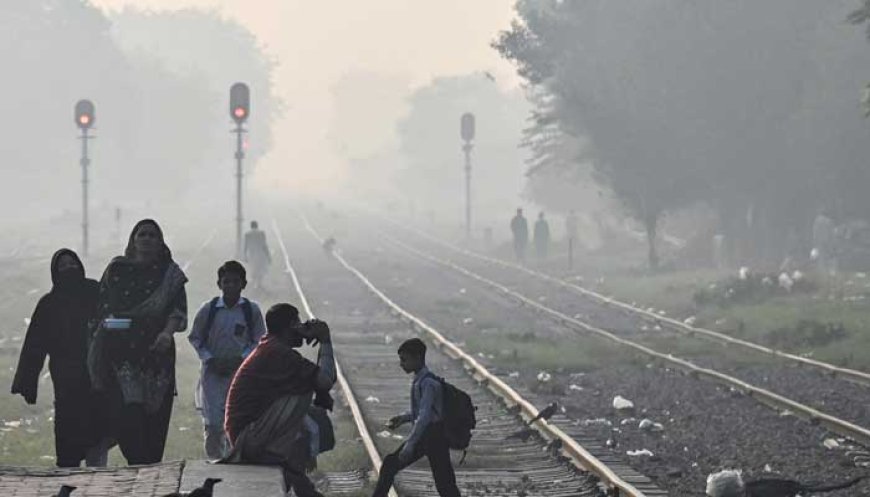Lahore's AQI soars past 1,000 again to register worst air quality globally

1. Punjab govt's smog war room committee review weather and air quality forecasts on daily basis
Residents of Lahore are struggling under a thick layer of smog that has pushed the city's Air Quality Index (AQI) over the 1,000 mark again, ranking it as the world’s most polluted city on Wednesday.
Data from Swiss air quality monitor IQAir revealed Lahore's AQI reached a "hazardous" level of 1,165 early in the morning. Meanwhile, PM2.5 pollutants—tiny particles that pose the greatest health risk—were recorded at 125.2 times higher than the World Health Organization's (WHO) recommended annual guidelines.
Although the AQI later dropped to 1,099, it remained in the "hazardous" range, fluctuating throughout the day. This severe smog has persisted for days, with the AQI hitting as high as 1,194 earlier in the week.
The worsening air quality has led to a rise in health issues across Punjab. The Health Department confirmed more than 55,000 cases of eye infections between October 21 and 27, including over 7,000 in Lahore alone. Over 6,000 people reported issues with their nose, ears, and throat, prompting medical experts to advise increased water intake in smog-affected areas.
By 10:46 a.m., Lahore's AQI dropped to 751—still 90.3 times higher than WHO's recommended level—while New Delhi, the world's second-most polluted city, recorded an AQI of 364.
In response to the hazardous smog levels, the Punjab government has set up a "smog war room." Officials announced that this unit would monitor air quality and weather forecasts daily and track field officers’ actions. Staff from eight departments are collaborating to address pollution, including controlling farm waste burning and managing traffic. The war room will hold twice-daily sessions to analyze data, update stakeholders on pollution control efforts, and issue public advisories.
Last week, Lahore recorded an unprecedented AQI of 1,900, over 120 times the WHO guidelines, prompting school closures and work-from-home orders. At the time, Punjab's senior minister Marriyum Aurangzeb attributed the hazardous air to pollution drifting from India, just 25 kilometers away, where northern areas are also grappling with high pollution levels.
South Asia endures severe winter pollution as cold air traps emissions, dust, and farm fire smoke. A recent study indicated that pollution could reduce life expectancy by over five years in the region. On Tuesday, New Delhi’s environment minister, representing the world’s most polluted capital for four years running, announced plans to consider artificial rain as a solution this year.


















































